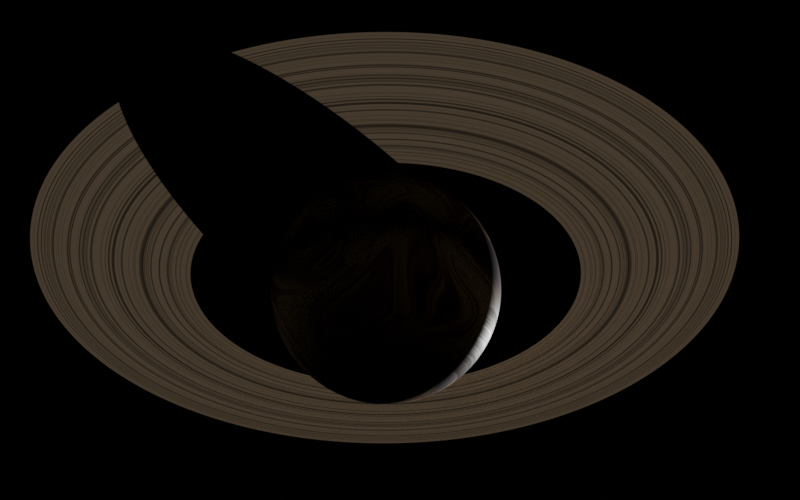As mentioned in a comment, it would be incorrect to model this situation with an emissive material, as no light is being emitted. Fortunately, there is a shader in Cycles that supports your use case.
The Translucent shader emulates light passing through a thin sheet of material, and being diffused on the other side. This is frequently used for materials such as paper or grass - very thin layers that let the light pass through.
You can also use it for the ring material. However, you need to mix it with your current material, as only a fraction of the light is let through - part of it is still diffused. Example setup:

Results
From the top:

From the bottom:

Ring shadows:
 forgive the lazy texturing
forgive the lazy texturing
Note that we have not used any shadow "hacks" or emissive materials - hence the rendered result is reasonably physically accurate. In particular note that:
- No fake light is being created
- Rings diffuse light as expected
- Rings catch shadows (on both sides) from other objects
- Rings cast shadows on the planet
Possible improvements
To further improve the material, you could:
- Tweak the mix value so that the material is just as translucent as it should be
- Adjust the opacity of the material depending on the view angle (perpendicular angles should be more transparent, but slanted angles should be more opaque, because light has to travel further through the asteroid cloud, so it would have a greater chance of being diffused. If you wanted even more physically accurate results, you could give the rings a small amount of thickness and render their volume)
- Adjust textures, colors, etc
Why this is better than hacking with shadow colors
This sort of setup will simulate light bounces more physically accurately. In particular, it will ensure that no light is being "created" from nothing - the amount of light redirected from a material will be no more than the light that has shined on it.
This would be difficult to achieve manually. As you already realized, dealing with shadows yourself would be tricky, even if you had access to shadow data. In addition, you would have to ensure that the material doesn't emit too much light - for example, if the light source is at an angle, there should be less light than if it was perpendicular to the surface.




